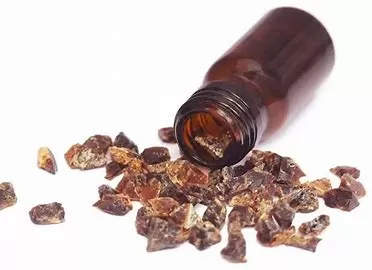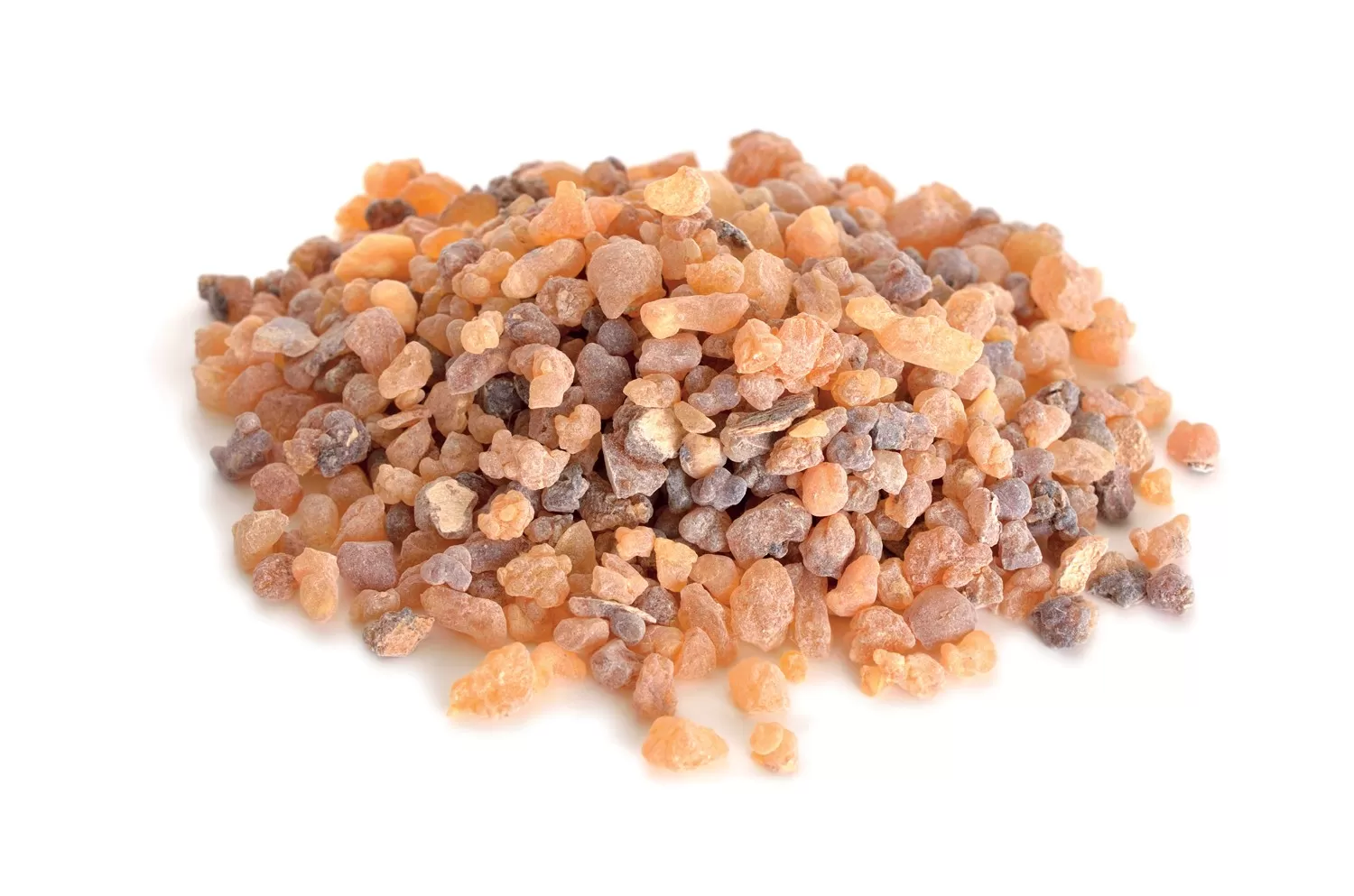- 0086-571-85302990
- sales@greenskybio.com
Which Is Better for Joint Pain: Turmeric or Boswellia?
2025-03-18
Joint pain affects millions worldwide and can significantly reduce quality of life by impairing mobility, causing discomfort, and limiting daily activities. Whether joint pain stems from conditions like osteoarthritis, rheumatoid arthritis, injury, or general wear and tear, managing inflammation is one of the most critical strategies for relief. Amid rising interest in natural remedies, turmeric and Boswellia have emerged as two popular and scientifically supported anti-inflammatory supplements for alleviating joint pain.
Turmeric, derived from the rhizome of the Curcuma longa plant, is well-known for its primary active compound, Curcumin. Boswellia, also referred to as Indian frankincense, is sourced from the gum resin of the Boswellia serrata tree and contains boswellic acids as its active constituents. While both supplements are widely lauded for their efficacy, the question often arises: which is better for joint pain? This article will examine the benefits, mechanisms, and applications of turmeric and Boswellia to help determine which may be the superior choice or whether they can be used together for optimal results.
Turmeric and Curcumin: A Powerful Antioxidant and Anti-Inflammatory Remedy
Turmeric has been used for centuries in Ayurvedic and traditional Chinese medicine due to its wide-ranging health benefits. Its most active compound, Curcumin, is responsible for much of its anti-inflammatory, antioxidant, and pain relief properties.
Mechanisms of Action
Curcumin works by modulating various biological pathways involved in inflammation. Specifically, curcumin inhibits the activity of pro-inflammatory enzymes, such as cyclooxygenase-2 (COX-2), and transcription factors like nuclear factor-kappa B (NF-κB). These enzymes and proteins are key players in promoting the chronic inflammation that underlies many joint disorders, including arthritis. By downregulating their activity, curcumin helps reduce swelling, pain, and stiffness.
Turmeric is also a potent antioxidant. Curcumin scavenges free radicals, harmful molecules that can cause cellular damage and contribute to oxidative stress. This antioxidant effect is critical for protecting joint tissues and reducing the progression of age-related or disease-related joint problems.
Evidence and Applications
Numerous studies have demonstrated the effectiveness of curcumin in alleviating joint pain. A systematic review published in the Journal of Medicinal Food found that curcumin supplementation consistently improved symptoms of arthritis, including pain and physical function. Many clinical trials have shown that curcumin reduces joint swelling and stiffness in patients with osteoarthritis and rheumatoid arthritis.
Turmeric supplements are also credited with improving overall joint health, reducing the markers of inflammation like C-reactive protein (CRP), and providing neuroprotective effects that could indirectly benefit pain perception.
Limitations
While turmeric is highly effective, curcumin's bioavailability—or the body's ability to absorb and utilize it—is naturally low. To overcome this limitation, formulations often include Black Pepper Extract (piperine), phospholipids, or nanoparticles to enhance absorption. Choosing products with such enhancements can dramatically improve results.
Boswellia Serrata: The Ancient Resin for Joint Pain Relief
Boswellia serrata, or Indian frankincense, has been employed as a natural remedy for centuries in Ayurvedic medicine to treat inflammatory conditions, including arthritis. Its active constituents, boswellic acids, play a pivotal role in its effectiveness.
Mechanisms of Action
Boswellia acts on inflammation through a distinctive pathway. Its boswellic acids inhibit 5-lipoxygenase (5-LOX), an enzyme involved in the production of leukotrienes. Leukotrienes are inflammatory molecules associated with joint pain, swelling, and stiffness in conditions like osteoarthritis and rheumatoid arthritis. By blocking 5-LOX activity, Boswellia reduces inflammation in a targeted manner.
Additionally, Boswellia is believed to improve blood flow to joints by preventing the breakdown of glycosaminoglycans, a critical component of cartilage. This contributes to cartilage preservation and overall joint health, offering long-term benefits for individuals struggling with degenerative inflammatory diseases.
Evidence and Applications
Clinical research supports the use of Boswellia serrata for joint pain relief. A study published in Phytomedicine showed that participants with osteoarthritis experienced a significant reduction in pain and increased mobility after Boswellia supplementation. Another study in Arthritis Research & Therapy demonstrated that Boswellia reduced joint swelling and improved physical function in patients with knee osteoarthritis.
Boswellia formulations are particularly effective for individuals resistant to traditional pharmaceutical anti-inflammatory drugs or those seeking a natural alternative with fewer side effects.
Limitations
While Boswellia is considered safe for most people, gastrointestinal discomfort—such as nausea or acid reflux—may occur in some individuals. Additionally, Boswellia’s effects may take slightly longer to become apparent compared to turmeric, with results more noticeable after several weeks of consistent use.
Comparing Turmeric and Boswellia: Which One Is Better for Joint Pain?
Anti-Inflammatory Mechanisms
Turmeric and Boswellia both reduce inflammation through distinct mechanisms, with turmeric targeting NF-κB and COX-2 pathways and Boswellia acting on the 5-LOX pathway. While these pathways can overlap, they are complementary, suggesting that combining turmeric and Boswellia could be a powerful strategy to address a wider range of inflammatory processes.
Evidence-Based Effectiveness
Both supplements are backed by strong scientific evidence showing efficacy in reducing joint pain and inflammation. Turmeric has been extensively studied, particularly for arthritis, and its benefits are well-documented in large clinical populations. Boswellia also enjoys strong clinical support, with studies confirming its ability to reduce pain and improve joint function.
Speed of Results
Turmeric may provide faster-acting relief for acute pain due to curcumin’s regulatory effects on inflammatory enzymes. In contrast, Boswellia’s effects are more gradual, but it may offer superior joint preservation and cartilage support over the long term due to its ability to protect glycosaminoglycans.
Long-Term Benefits
Turmeric’s antioxidant properties offer additional systemic health benefits, including neuroprotection and cardiovascular support. Boswellia’s cartilage-preserving effects make it particularly valuable for individuals with long-standing joint issues or degenerative diseases.
Safety and Side Effects
Both turmeric and Boswellia are considered safe for most individuals when consumed in appropriate doses, with turmeric occasionally causing mild gastrointestinal discomfort and Boswellia potentially leading to stomach discomfort in sensitive individuals. Those taking these supplements for prolonged periods should consult with a healthcare provider to ensure proper dosing and avoid interactions with medications.
Can They Be Used Together?
Given their complementary mechanisms of action and overlapping benefits, turmeric and Boswellia can be effectively combined for joint pain relief. Many supplement manufacturers offer formulations that include both in a synergistic blend to maximize anti-inflammatory, antioxidant, and cartilage-preservation effects. This combination allows individuals to address multiple inflammatory pathways and improves overall outcomes for joint health.
Practical Recommendations
1. For Acute Joint Pain: If rapid relief is the goal, turmeric may work faster due to curcumin’s quick anti-inflammatory response. Look for enhanced formulations that improve bioavailability, such as those with piperine (Black Pepper Extract).
2. For Chronic and Degenerative Joint Conditions: Boswellia may be more suitable for individuals seeking joint protection and long-term cartilage preservation. It can also offer relief for chronic inflammation over several weeks.
3. Combination Supplements: Consider supplements that include both turmeric and Boswellia for broad-spectrum benefits for joint pain and inflammation. These combination formulas can provide optimal support for joint health while addressing different mechanisms of inflammation.
4. Lifestyle Integration: Pairing supplementation with anti-inflammatory foods, regular physical activity, and proper hydration enhances the effectiveness of turmeric and Boswellia for joint pain management.
Conclusion
Both turmeric and Boswellia are highly effective natural remedies for relieving joint pain, reducing inflammation, and promoting joint health. While turmeric offers faster, systemic relief through its antioxidant and anti-inflammatory properties, Boswellia excels at cartilage preservation and provides long-term joint support through its targeted inhibition of leukotriene production.
For individuals seeking a holistic approach to joint pain, combining turmeric and Boswellia in one supplement or regimen is often the best strategy. This synergy allows the body to benefit from both immediate and sustained relief while maximizing the protective effects on joint tissues. Regardless of which supplement you choose, consider consulting a healthcare professional to ensure optimal dosage and avoid any potential interactions. With proper use, turmeric and Boswellia together or separately can help you regain mobility, comfort, and quality of life—naturally.














